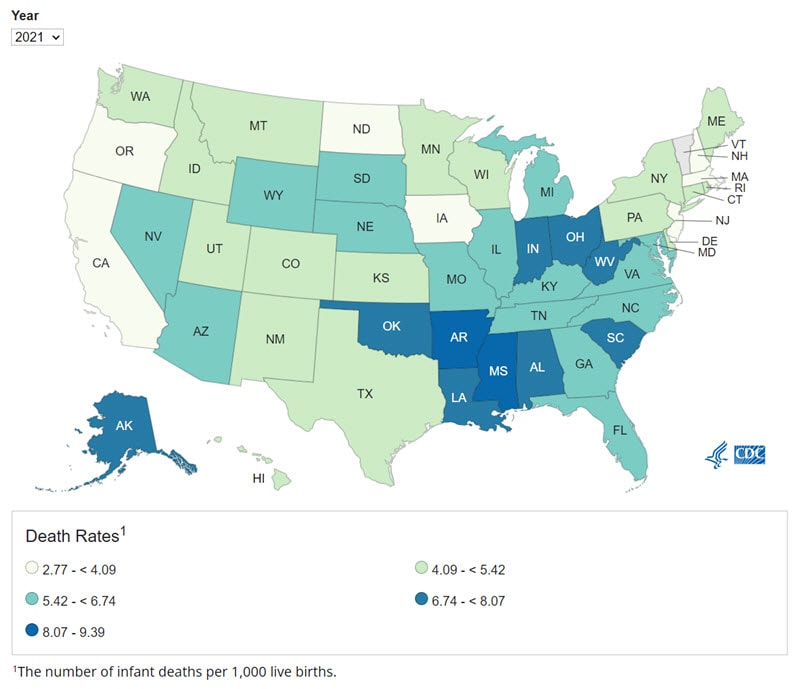Infant Mortality
Learn about infant mortality in the United States, including causes and differences in rates among population groups.
About Infant Mortality
Infant mortality is the death of an infant before his or her first birthday. The infant mortality rate is the number of infant deaths for every 1,000 live births. In addition to giving us key information about maternal and infant health, the infant mortality rate is an important marker of the overall health of a society. In 2021, the infant mortality rate in the United States was 5.4 deaths per 1,000 live births. (See Mortality in the United States, 2021).
Causes of Infant Mortality
Almost 20,000 infants died in the United States in 2020. The five leading causes of infant death in 2021 were:
- Birth defects.
- Preterm birth and low birth weight.
- Sudden infant death syndrome.
- Injuries (e.g., suffocation).
- Maternal pregnancy complications.
Infant Mortality Rates by State, 2021
View the Infant Mortality Rates by State Map from the National Center for Health Statistics.
Healthy People provides science-based, 10-year national objectives for improving the health of all Americans. One of the Healthy People objectives is to reduce the rate of all infant deaths. In 2021, 19 states met the Healthy People 2030 target of 5.0 infant deaths per 1,000 live births. Geographically, infant mortality rates in 2021 were highest among states in the South, Alaska, and in the Midwest.
In 2021, infant mortality rates by race and ethnicity were as follows:
- Non-Hispanic Black: 10.6
- Non-Hispanic Native Hawaiian or other Pacific Islander: 7.8
- Non-Hispanic American Indian/Alaska Native: 7.5
- Hispanic: 4.8
- Non-Hispanic white: 4.4
- Non-Hispanic Asian: 3.7
All records that indicted Hispanic ethnicity are classified as Hispanic regardless of race. For brevity, text references omit the term “single-race.”
CDC Activities
CDC is committed to improving infant outcomes. This requires public health agencies working together with health care providers, communities, and other partners to reduce infant mortality in the United States. This joint approach can help address the social, behavioral, and health risk factors that contribute to infant mortality and affect birth outcomes.
